Introduction
This guide will help you install the dual hard drive kit, and can be used to add either a regular hard drive or SSD. This procedure does not require you to permanently remove or disable your optical drive.
Tools
Parts
-
-
Loosen the three Phillips screws securing the access door to the bottom edge of your iMac.
-
Remove the access door from your iMac.
-
-
-
Use your fingers or the tip of a spudger to slide the black plastic RAM tray pull tab out of the RAM slot.
-
-
-
Pull the black plastic tab away from the iMac to eject the RAM chip from its socket.
-
Use your fingers to slide the RAM chip out of its socket.
-
-
-
Stick a heavy-duty suction cup near each of the two top corners of the glass panel.
-
While lightly holding the suction cup against the glass, raise the movable handle until it is parallel with the other handle (as indicated by the third picture).
-
-
-
Gently lift the glass panel perpendicular to the face of the LCD, enough to clear the steel mounting pins attached along the underside of the top edge of the glass panel.
-
Pull the glass panel away from the lower edge of the iMac and carefully set it aside.
-
-
-
Carefully lay the iMac stand-side down on a flat surface.
-
Use a thin hooked tool to lift one side of the top edge of the display by its steel outer frame.
-
Raise and hold the display high enough to access the cables.
-
-
-
Disconnect the vertical sync cable in the upper left corner of the screen. Use the tip of a spudger to push on the connector's side tabs and gently walk it out of its socket.
-
-
-
Disconnect the LED backlight driver cable with your hand by pressing the tab down and sliding it towards the bottom of the display.
-
-
-
Pull the black tab straight up to disconnect the latch on the display data cable ZIF connector.
-
Continue to pull the black tab up toward the top of the device, to detach the display data cable.
-
-
-
Use the tip of a spudger to disconnect the display power cable next to the display data cable.
-
-
-
Carefully pull the display toward the top edge of your iMac and lift it out of the iMac case.
-
-
-
Lay the display face down on a flat, soft surface.
-
If there is a wire or cable underneath adhesive tape, always pull the tape off first. Do not pull on the cable directly.
-
If the cable is glued to the chassis, use a heated iOpener or a hair dryer to soften the adhesive first. You can then slide an opening pick underneath the cable to loosen it. Never pull on the delicate connectors.
-
Slide an opening pick underneath the foam cushion pieces to separate them from the display, and gently pull them off. You may need some double sided tape to re-attach them to the new display.
-
-
-
Use the flat end of a spudger to pull the optical drive data cable out of the optical drive.
-
-
-
Use the tip of a spudger to pull the optical drive thermal sensor connector out of its socket.
-
-
-
Slightly lift the left edge of the optical drive and then pull it to the side to release the centering pins.
-
-
-
Release the right and left speaker connectors from their sockets using the flat end of a spudger.
-
-
-
Locate the AirPort card at the top center of the logic board and just below the hard drive.
-
Use the flat end of a spudger to gently pry each of the antenna cables off their sockets.
-
-
-
Use the flat edge of a spudger to push the camera/Bluetooth/ambient light sensor connector out of its socket.
-
-
-
Release the hard drive fan connector from its socket by pushing on its tabs using the flat end of a spudger.
-
-
-
Use the flat end of the spudger to push the ambient temperature sensor connector out of its socket.
-
-
-
Locate the IR sensor located behind the black Apple logo.
-
Detach the IR sensor by pulling it straight up and out from the case.
-
-
-
Remove the eight T10 Torx screws securing the logic board and heat sink assembly to the iMac case.
-
-
-
Simultaneously lift and rotate the logic board and heat sink assembly away from the iMac case until you can easily access the back side of the logic board.
-
-
-
Locate the secondary SATA socket, next to the primary SATA socket.
-
Plug in the included SATA data/power cable.
-
-
-
Route the new SATA cable through the indentation that the primary SATA cable goes through and into the optical drive bay.
-
Set the logic board back into place, being careful not to catch, cover, or pinch any cables.
-
-
-
To secure your new drive in your iMac, you will need to place high strength double-sided tape at the four corners on the side of the drive with the SATA connectors.
-
Peel the backing off one side of the double sided tape.
-
Press the exposed adhesive side of the double sided tape to the corner of the SSD.
-
Repeat the above process for the remaining 3 corners.
-
-
-
Connect both the SATA data and SATA power connectors to their respective sockets on the SSD.
-
Peel the backing off of the double sided tape.
-
Carefully set the SSD into the iMac optical bay as close to the lower left corner as possible.
-
Once you are happy with the SSD's placement, firmly press down along its edges to ensure full adhesion.
-
To reassemble your device, follow these instructions in reverse order from Step 27.
71 comments
Don´t forget to take out the RAM first. Otherwise it is very difficult to replace the logic board back in it´s place.
B Riefel -
Excellent guide. Thank you!
I got through everything, turned on the iMac, got the start up gong, and ... nothing. Screen stayed black and the fans started blowing like crazy, indicating failure of Apple Hardware Test. All my attempts to remedy (zap PRAM, reset SMC) failed. Uh oh.
Opened the machine back up, took out the LCD, and re-seated all four connections from display panel to logic board. Crossed my fingers and put it back together. This time, the displayed turned on, the Apple logo appeared, system booted up, and the new SSD appeared on the desktop. Yay!
The connectors from the LCD are delicate. It's tricky to seat them properly without damaging them, but don't close it up without a positive click on each one.
The upgrade has been fantastic so far. SanDisk 120GB SSD. Dramatic speed improvement. Well worth all the surgery on the machine.
in step 22 you can see the wifi cables are not connected anymore. but there is no step that shows you should disconnect them
+1 Unfortunately mine has been broken (CH1 cable is out from the UFL connector). Unfortunately I do not now how to repair it.
It would be important to add this step in order to protect others falling into the same issue.
PeterZ -


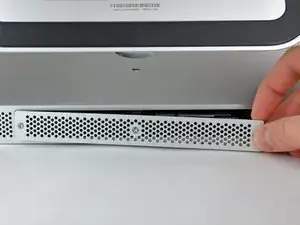

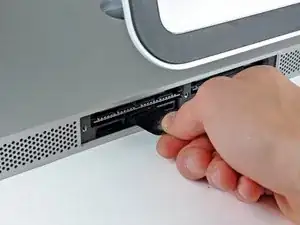




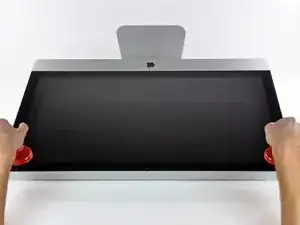

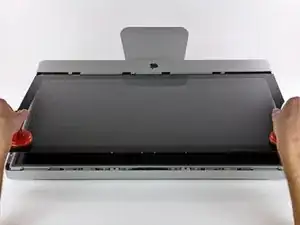




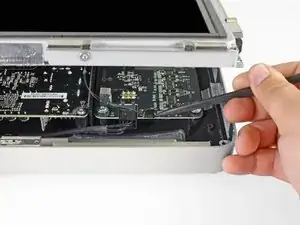



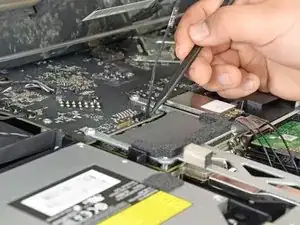



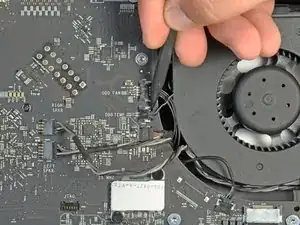







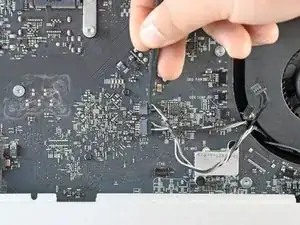







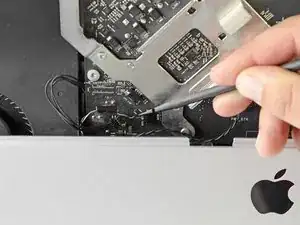

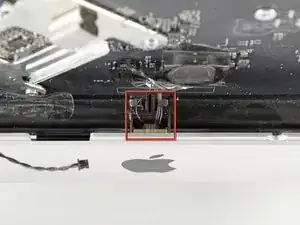










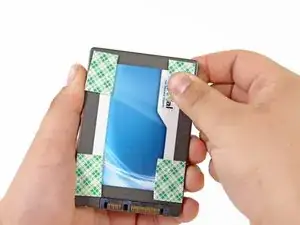
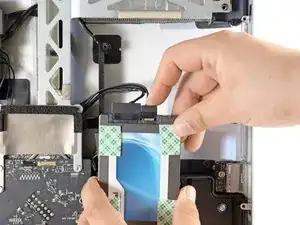

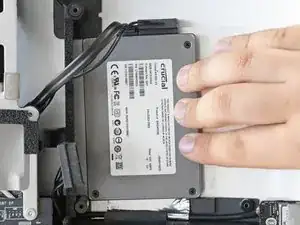

I am going to put a very important comment here. Before you start this process listen to the fans on your iMac do any of them sound obviously loud (think about how quiet your iMac used to sound as a reference) If you notice one or more of them sounding substantially loud compared to the others consider locating a replacement fan prior starting this process. After all if you are already “in the neighborhood” it is a shame to do all this work only to have to disassemble your imac a couple weeks later because you realize the fan is failing. I speak from my own personal learning experience of having to disassembly my iMac 3 weeks later because the HDD was failing and apparently the moving the fan around was just enough to push it to start really under performing.
Wizbang FL -
I’m not sure why it is necessary to remove the RAM. As far as I can tell, it can remain in place during this procedure.
gordonhamachi -